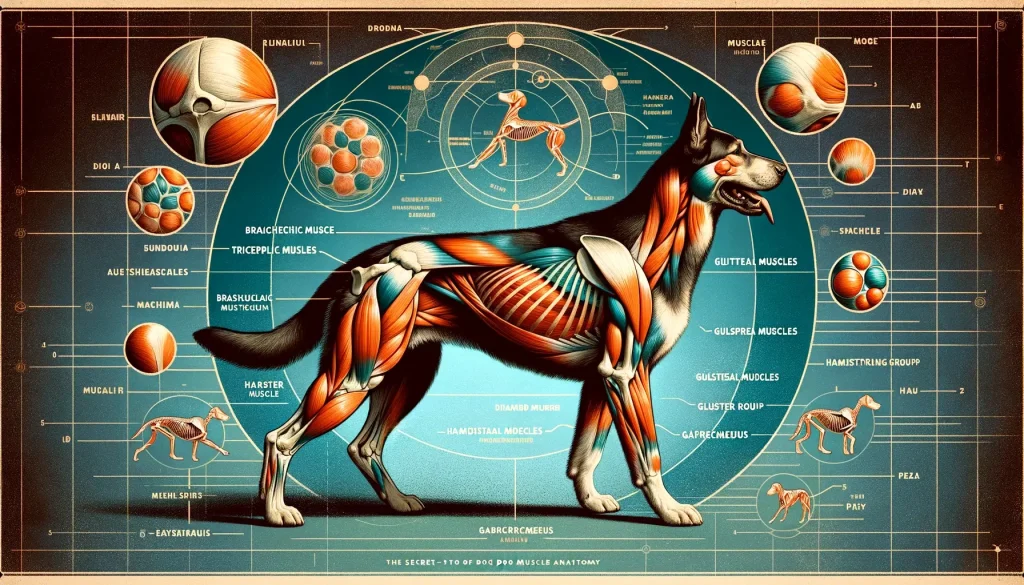
The Secrets of Dog Muscle Anatomy
Understanding the muscular structure of dogs is crucial for their care and wellness. Dogs have a complex system of muscles that support their movement, flexibility, and overall health. From the powerful muscles propelling their running to the delicate structures allowing for intricate facial expressions, each muscle group plays a vital role in a dog’s physical abilities and emotional expressions.
But why is it important to know about your dog’s muscle anatomy? Beyond the basic reasons of healthcare and injury prevention, knowledge of canine muscular structure can enhance training, improve grooming practices, and even deepen the bond between you and your furry friend. How does each muscle group contribute to your dog’s agility, strength, and well-being? This guide aims to answer that and more.
Let’s embark on this journey to uncover the dynamic world of canine muscles, learning how they function together to support your dog’s active lifestyle. But first, have you ever wondered which muscle groups are most prone to injury in active dogs, and how can you support your pet’s muscular health day-to-day?
Muscle Groups in Dogs and Their Functions
Understanding the muscle anatomy of dogs is not just for veterinarians or professional trainers—it’s vital for all dog owners. The muscular system in dogs is a complex network that enables movement, provides support to skeletal structures, and protects internal organs. Here’s a closer look at some of the key muscle groups in dogs and their primary functions:
| Muscle Group | Primary Function |
|---|---|
| Brachiocephalic muscle | Moves the head and extends the shoulder. |
| Triceps brachii | Extends the elbow for powerful forelimb thrust. |
| Gluteal muscles | Powerful extension of the hip, critical for running and jumping. |
| Hamstring group | Includes biceps femoris, semitendinosus, and semimembranosus muscles; extends the hip and flexes the knee, crucial for quick acceleration. |
| Gastrocnemius | Flexes the lower hind limb, vital for pushing off the ground. |
Beyond these primary groups, muscles like the latissimus dorsi and pectoral muscles play critical roles in stabilizing movements and aiding in the dog’s respiratory process. Muscle health is essential, not only for a dog’s physical activities like running, jumping, and swimming but also for normal posture and even digestion.
Injury prevention is key. Regular exercise, proper nutrition, and avoiding overexertion can keep these muscles strong and healthy. For pet owners, recognizing the signs of muscle strain or injury early can make a significant difference in a dog’s quality of life. Symptoms such as reluctance to move, visible discomfort while exercising, or swelling should prompt a visit to the vet.
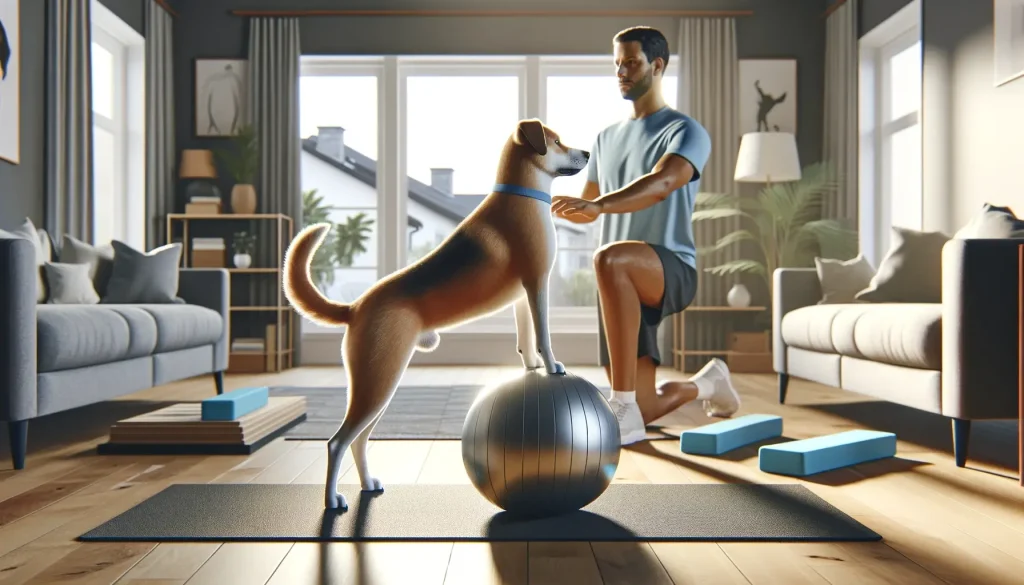
Preventing Muscle Injuries in Dogs
Muscle injuries in dogs can range from minor strains to more serious conditions requiring veterinary care. Preventing these injuries is key to ensuring your dog leads a happy and active life. The following strategies can help protect your dog’s muscles from injury:
- Proper Warm-Up: Always start with a gentle warm-up before engaging in vigorous exercises. This can include slow walks or light stretching to prepare the muscles.
- Avoid Overexertion: Pay attention to your dog’s limits. Overworking or intense activities beyond what they’re accustomed to can lead to injuries.
- Regular Exercise: Consistency in physical activity helps maintain muscle strength and flexibility, reducing the risk of strains.
- Varied Activities: Incorporating different types of exercises works various muscle groups, preventing overuse of any single muscle group.
- Proper Nutrition: A balanced diet supports muscle health. Adequate protein, vitamins, and minerals are essential for muscle repair and strength.
- Rest and Recovery: Ensure your dog has enough rest after exercises to allow their muscles to recover, especially after intense or new activities.
Injury can happen despite precautions. If you suspect a muscle injury, reduce activity level and consult your veterinarian. Early intervention can prevent more severe complications.
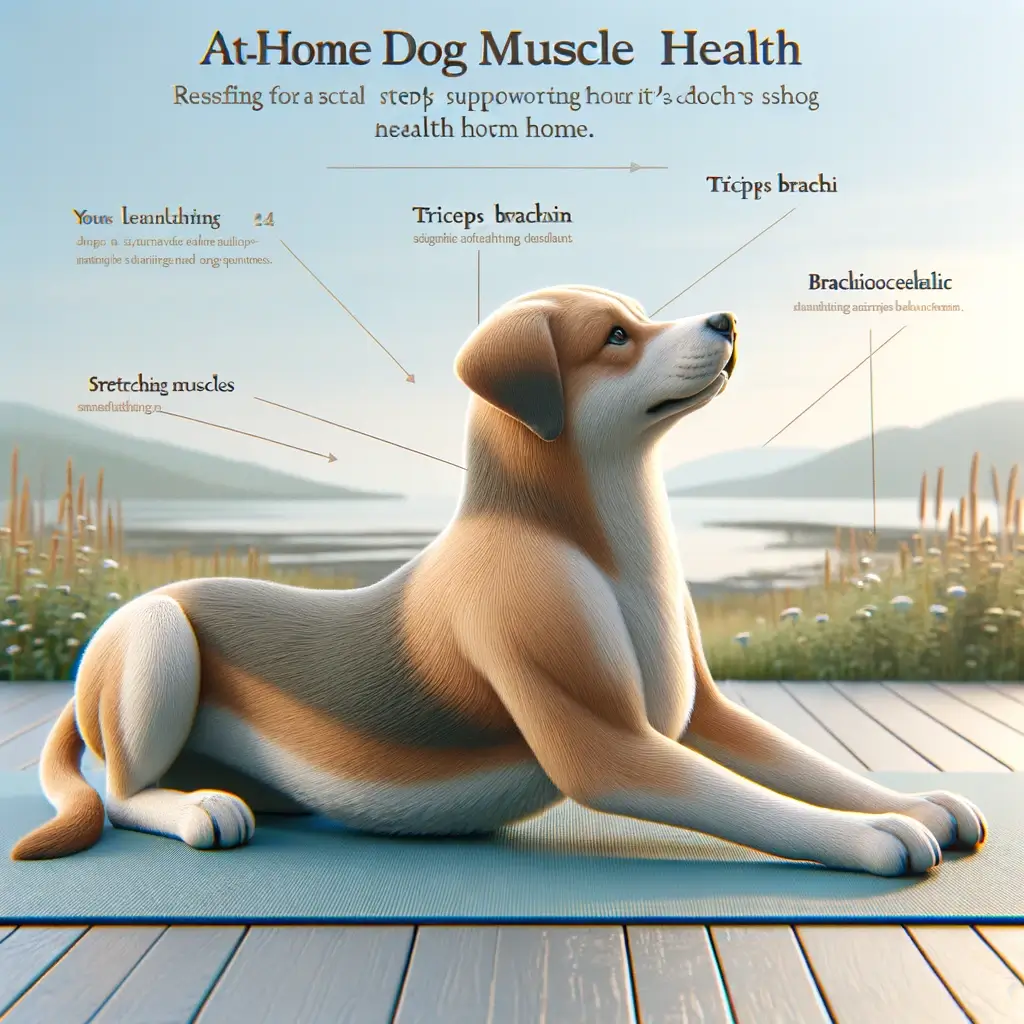
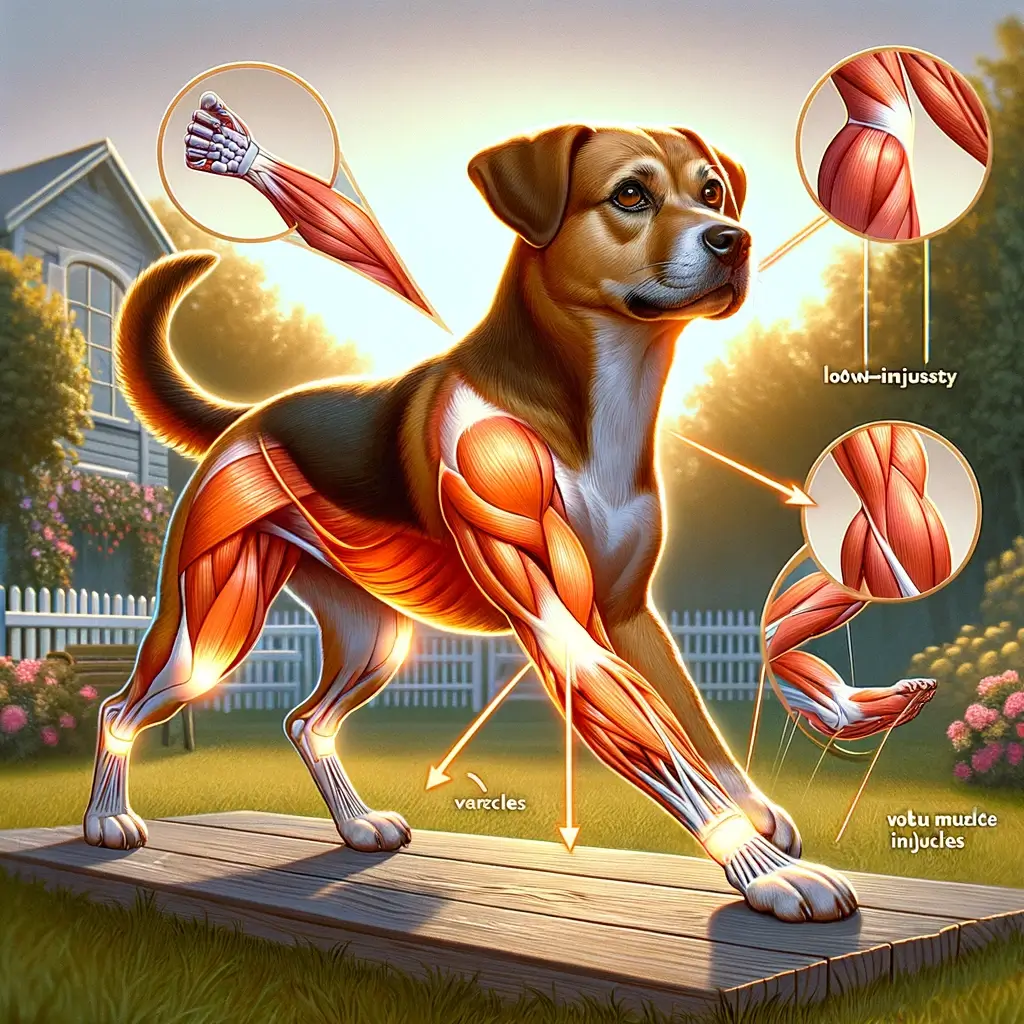
At-Home Dog Muscle Health Support
Keeping your dog’s muscles healthy is crucial for their overall well-being. As a pet owner, there are simple yet effective strategies you can implement at home to support your dog’s muscle health. Here, we outline practical steps to keep your furry friend in top shape.
Regular Exercise: Consistent physical activity is key. Tailor the exercise to your dog’s breed, age, and health status. Activities like walking, running, and fetch keep muscles toned and prevent atrophy.
Proper Nutrition: A balanced diet rich in proteins and essential nutrients supports muscle growth and repair. Consider incorporating supplements with vet advice for optimal muscle health.
Gentle Stretching: After a warm-up, gentle stretching can help maintain muscle elasticity. It’s beneficial for dogs of all ages, especially seniors with less mobility.
Massage: Regular massages can improve circulation, reduce muscle tension, and enhance relaxation. Learn proper techniques to safely massage your dog.
Weight Management: Excess weight puts unnecessary strain on muscles and joints. Keeping your dog at a healthy weight prevents muscle strain.
Hydration: Sufficient water intake is vital, especially after exercise, to support muscle health and overall hydration.
Implementing these strategies not only aids in maintaining your dog’s muscle health but also enhances their quality of life. A strong, well-cared-for muscular system supports your dog’s physical activities and contributes to a happy, active lifespan.
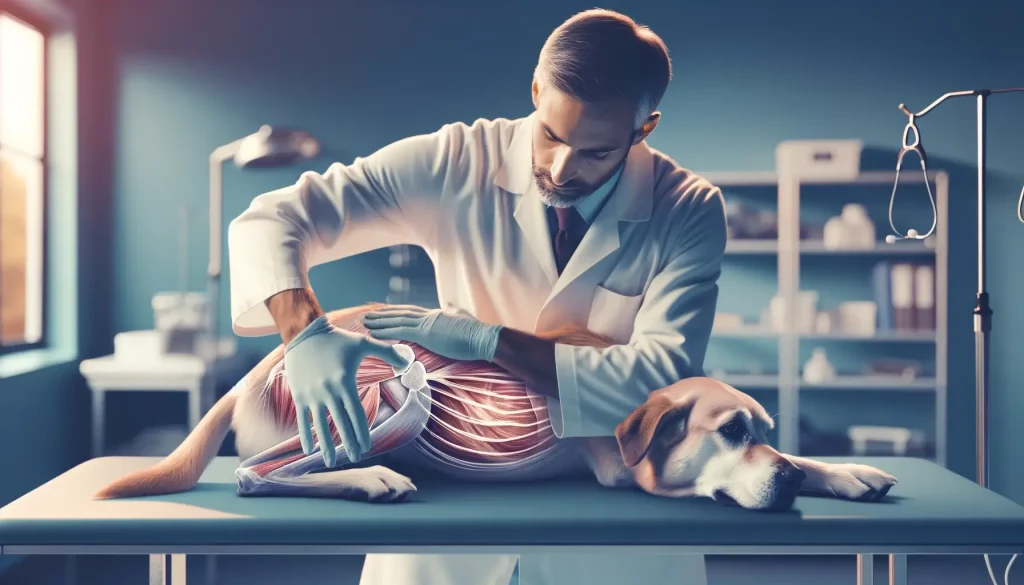
When to Take Your Dog to the Vet
Understanding your dog’s muscle health is crucial for any pet owner. But, it’s equally vital to know when an issue warrants a visit to the vet. Here are signs and scenarios where professional advice is necessary to maintain your dog’s muscular wellness.
Warning Signs of Muscular Issues: Pay attention to signs of distress in your dog that could indicate a muscle problem. This includes limping, reluctance to move, swelling in the limbs, whining, or any sudden change in behavior that suggests pain or discomfort. These symptoms often hint at injuries or conditions like strains, sprains, or tears that require immediate veterinary attention.
Post-Injury Care: If your dog has experienced a recent injury, even after primary treatment, follow-up visits are key to ensuring a proper recovery. Your vet can offer guidance on rehabilitation exercises, suggest physiotherapy or alternative treatments, and monitor the healing process to prevent complications.
Regular Check-Ups for Active or Aging Dogs: Dogs that are highly active or those entering their senior years benefit from regular musculoskeletal evaluations. Active dogs may experience wear and tear on their muscles and joints, while older dogs are prone to conditions like arthritis. Routine vet visits help in early diagnosis and management of potential problems.
Muscle Atrophy Concerns: Muscle atrophy, or the loss of muscle mass, can result from various causes, including disuse, ageing, or underlying health issues. If you notice your dog’s muscles diminishing in size or your dog losing weight, it’s time for a vet check. Early intervention can address the root cause and potentially reverse the condition.
Abnormal Gait or Posture: Changes in the way your dog walks, stands, or carries themselves can indicate muscle or joint issues. An abnormal gait might be the result of pain, muscle weakness, or neurological problems. A vet can assess these symptoms to determine their cause and recommend appropriate treatments or modifications to your dog’s activities.
Beginner Guide to Raising Quail at Home
What are the Signs of a Dog Concussion?
What Causes Your Dog’s Ears to Smell Bad?
When your dog’s ears start to emit an unpleasant odor, it might leave you puzzled…
Methimazole Treatment for Cat Hyperthyroidism
Methimazole plays a crucial role in managing feline hyperthyroidism, a condition marked by an overactive…
Got Hummingbirds in your Backyard? Here’s How to Care for Them.
Why Does Your Cat Pee Outside the Litter Box?
Cat’s Litter Box Issues It’s not uncommon for cat owners to face the frustrating dilemma…




